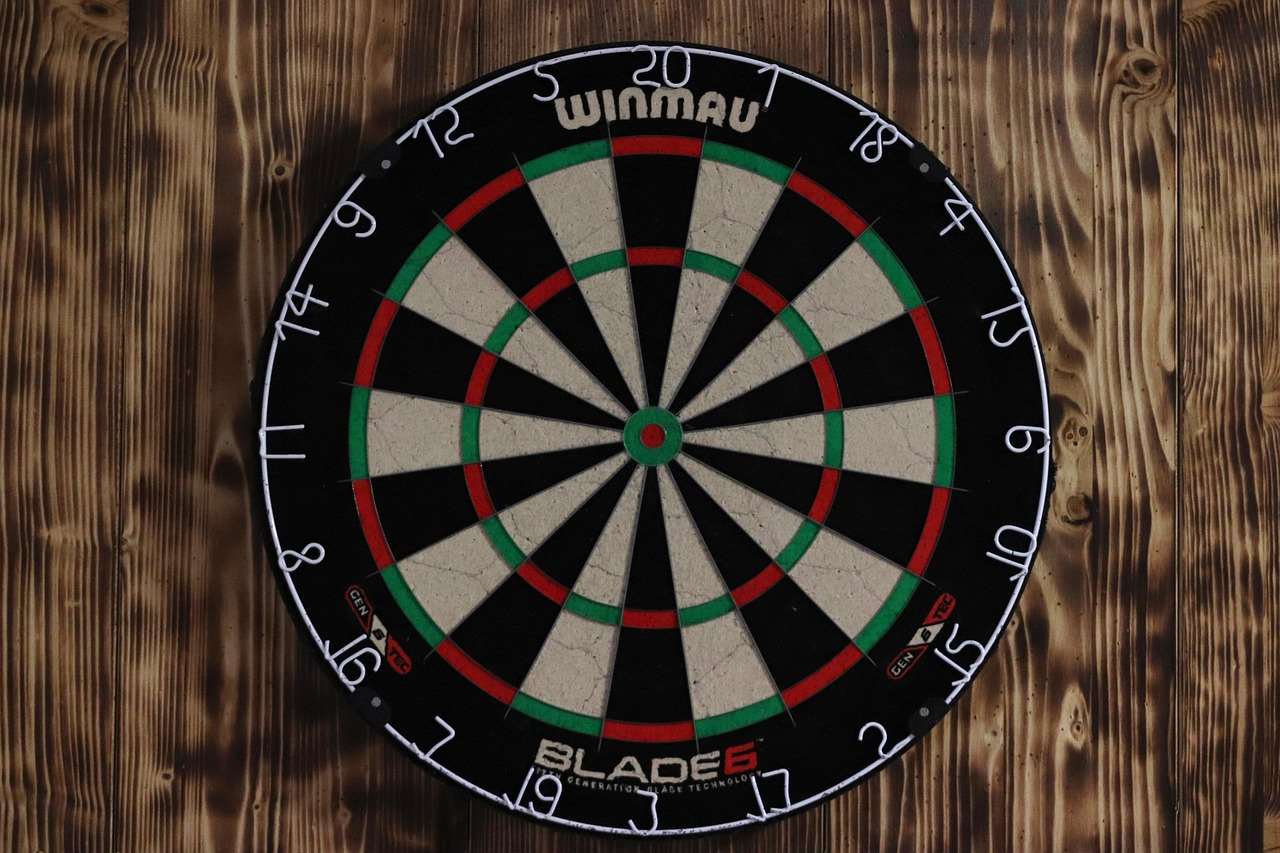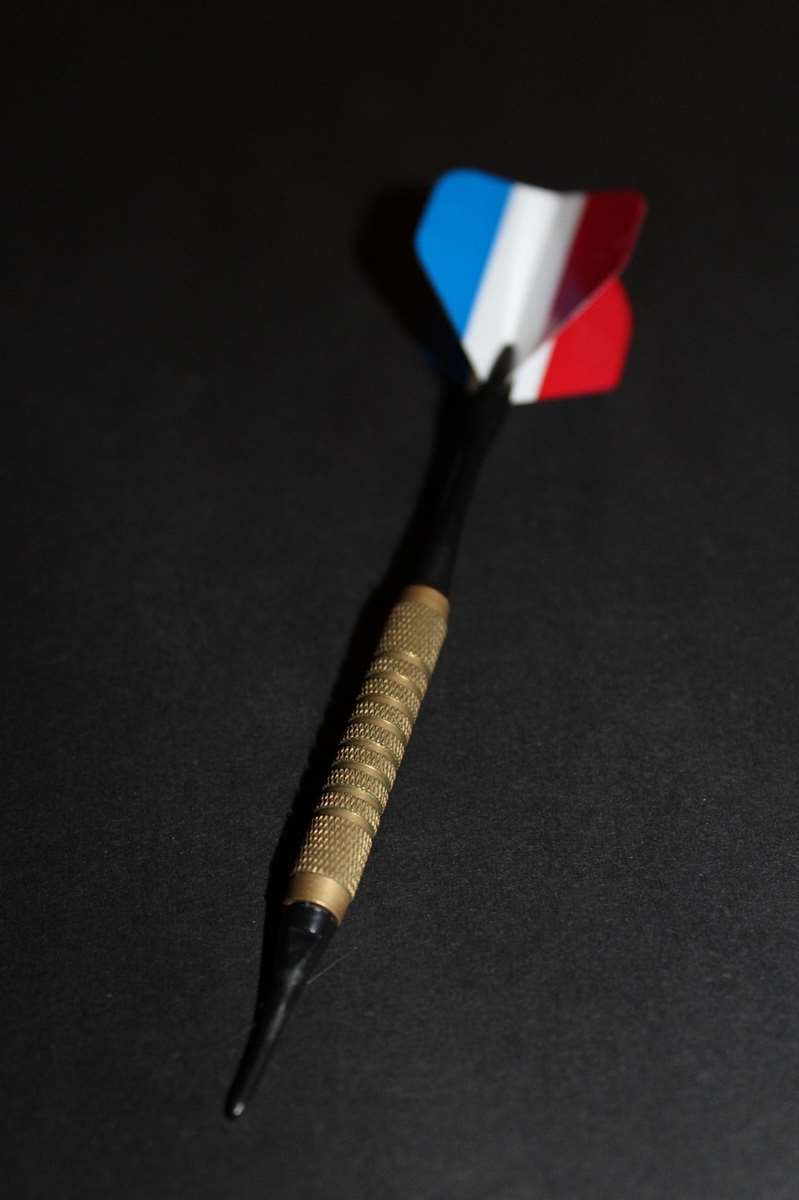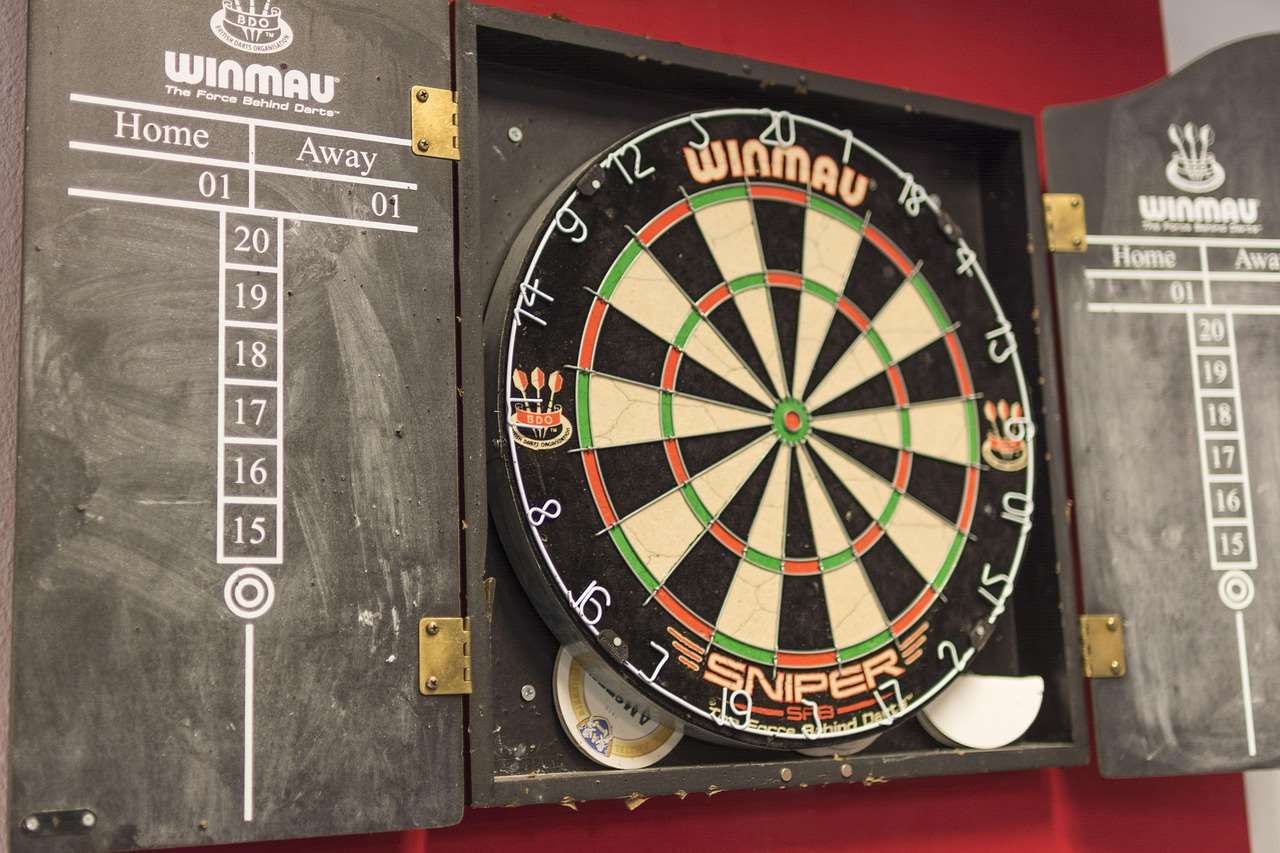Setting up a home darts area can be a lot of fun, but it’s crucial to prioritize safety. Dit home darts setup safety checklist will guide you through the essential steps to ensure a safe and enjoyable darting experience. We’ll cover everything from the ideal dartboard location and mounting techniques to player protection and responsible dart handling.
⚠️ Still Using Pen & Paper (Of een schoolbord)?! ⚠️
Stap in de toekomst! De Dart Teller -app behandelt alle scoren, stelt kassa voor, en volgt uw statistieken automatisch. It's easier than you think!
Probeer de Smart Dart Teller -app gratis!Klaar voor een upgrade? Klik hierboven!
Creating a Safe Darts Environment: The Essential Checklist
A safe darts environment is paramount for preventing accidents and injuries. Here’s a comprehensive home darts setup safety checklist to help you get started:
- Location, Location, Location: Choose a dedicated area with ample space. You’ll need enough room for players to stand comfortably and throw without obstructions. Ideaal, this should be a low-traffic area to minimize the risk of accidental collisions.
- Wall Protection: Darts can occasionally miss the board, so protect your walls! Consider using a backboard made of cork, wood, or a commercially available dartboard surround. This will prevent damage and potential injuries from stray darts.
- Verlichting: Good lighting is essential for accurate aiming and to reduce eye strain. Ensure the dartboard is well-lit, preferably with dedicated dartboard lighting systems that illuminate the board evenly.
- Floor Protection: Protect your floor from dropped darts. A dart mat or rug can cushion the impact and prevent damage to hardwood, tile, or other flooring.
- Safe Throw Line: Establish a clearly marked and safe throw line (oche). The official distance is 7 feet 9 1/4 inches (2.37 meters) from the front of the dartboard.
- No Distractions: Minimize distractions in the playing area. Keep pets and children away from the throwing zone to prevent accidents.
Herinneren, taking these precautions will significantly reduce the risk of injury and property damage, allowing you to enjoy your dart games to the fullest.
Dartboard Mounting: A Secure and Safe Setup

Proper dartboard mounting is crucial not only for accurate gameplay but also for safety. A wobbly or poorly mounted dartboard can be dangerous. Follow these steps to ensure a secure and safe setup:
- Height Matters: The center of the bullseye should be 5 feet 8 inches (1.73 meters) from the floor. This is the standard height for both steel-tip and soft-tip dartboards.
- Use a Sturdy Mounting Bracket: Most dartboards come with a mounting bracket. Ensure it’s securely attached to the back of the dartboard using screws or bolts.
- Find a Solid Wall: Choose a solid wall that can support the weight of the dartboard. Avoid mounting on flimsy drywall without proper reinforcement.
- Use a Level: Use a level to ensure the dartboard is perfectly vertical. This is essential for fair gameplay and prevents darts from veering off course.
- Securely Fasten the Bracket to the Wall: Use appropriate screws or bolts to attach the mounting bracket to the wall. If mounting on drywall, use wall anchors for added support.
- Double-Check Stability: Once mounted, give the dartboard a gentle shake to ensure it’s stable and secure. If it wobbles or moves, re-tighten the screws or bolts.
A properly mounted dartboard will provide a stable and safe playing surface for years to come. If you’re unsure about your mounting skills, consider hiring a professional handyman.
Choosing the Right Dartboard Surround
A dartboard surround is an essential safety accessory that protects your walls from stray darts. It also provides a defined playing area. When choosing a dartboard surround, consider these factors:
- Material: Cork, foam, and wood are common materials for dartboard surrounds. Cork is a good option for absorbing dart impacts, while foam offers good protection and is often more affordable.
- Size: Choose a surround that provides adequate coverage around the dartboard. A larger surround offers more protection.
- Thickness: A thicker surround will provide better protection against darts penetrating the wall.
- Easy Installation: Choose a surround that’s easy to install and remove. Some surrounds simply clip onto the dartboard, while others require mounting hardware.
Investing in a good-quality dartboard surround is a wise decision that will protect your walls and prevent costly repairs. You can find Alternatieve Darts -regels voor thuisspel for added fun.
Player Protection: Reducing the Risk of Injury

Beyond the physical setup, player behavior plays a significant role in darts safety. Here’s how to minimize the risk of injury during gameplay:
- Awareness: Be aware of your surroundings and other players. Avoid throwing darts when someone is walking in front of the dartboard.
- Safe Throwing Technique: Practice a smooth and controlled throwing technique. Avoid jerky or erratic movements that could cause you to lose control of the dart. Consider reviewing Basis Darts Fundamentals voor beginners to improve your form.
- Respect the Throw Line: Maintain a safe distance from the throw line when not throwing darts.
- Eye Protection: While not common, wearing eye protection (such as safety glasses) can provide an extra layer of safety, especially for young children or those with vision impairments.
- Footwear: Wear closed-toe shoes to protect your feet from dropped darts.
- No Horseplay: Avoid horseplay or distractions while playing darts. Concentrate on the game and maintain a safe environment.
By following these simple guidelines, you can significantly reduce the risk of injury and enjoy a safe and fun darts experience. Consider that fun dart game variations with modified rules might affect player safety.
Teaching Dart Safety to Children
If children are playing darts, it’s crucial to teach them about dart safety. Here are some tips for teaching dart safety to children:
- Supervision: Always supervise children when they are playing darts.
- Age Appropriateness: Ensure the darts are age-appropriate. Soft-tip darts are a safer option for younger children.
- Explain the Rules: Clearly explain the rules of the game and the importance of following safety guidelines.
- Demonstrate Safe Throwing: Show children how to throw darts safely and responsibly.
- Emphasize Awareness: Teach children to be aware of their surroundings and other players.
- Store Darts Safely: When not in use, store darts in a safe place out of reach of children.
By teaching children about dart safety, you can help them develop responsible habits and prevent accidents. Remember to always supervise children and ensure they understand the importance of following safety guidelines. You may want to consider adapting dart game rules for children for added safety.
Dart Maintenance and Handling: Keeping Your Darts in Top Condition

Proper dart maintenance and handling are essential for both performance and safety. Damaged or poorly maintained darts can be dangerous.
- Inspect Darts Regularly: Regularly inspect your darts for any signs of damage, such as broken flights, bent shafts, or loose points.
- Replace Damaged Parts: Replace any damaged parts immediately. Broken flights can cause darts to fly erratically, while bent shafts can affect accuracy.
- Sharpen Dart Points: Keep your dart points sharp to ensure they stick in the dartboard. Use a dart sharpener to maintain the sharpness of the points.
- Clean Darts Regularly: Clean your darts regularly to remove dirt and grime. Use a soft cloth and mild soap and water.
- Store Darts Safely: When not in use, store your darts in a dart case or holder to protect them from damage.
- Handle Darts with Care: Handle darts with care to avoid bending or breaking them. Avoid dropping darts on hard surfaces.
Maintaining your darts in good condition will not only improve your performance but also reduce the risk of injury. A dull dart is more likely to bounce out, increasing the chance of injury.
Responsible Dart Ownership
Owning darts comes with a responsibility to ensure they are used safely and responsibly. Here are some tips for responsible dart ownership:
- Store Darts Securely: Store darts in a secure location out of reach of children and unauthorized users.
- Use Darts Only in Designated Areas: Use darts only in designated dart playing areas. Avoid throwing darts in public places or areas where they could cause damage or injury.
- Dispose of Darts Properly: Dispose of broken or unwanted darts properly. Wrap the points in tape or cardboard before discarding them.
- Be Aware of Local Laws: Be aware of local laws regarding dart ownership and use.
By following these guidelines, you can be a responsible dart owner and help prevent accidents and injuries. Consider different modifying rules for mixed-level dart players for improved saftey, or explore adapting darts rules for small spaces: tips and tricks.
Emergency Procedures: Being Prepared for the Unexpected

Even with the best safety precautions, accidents can still happen. It’s important to be prepared for the unexpected. Here’s what to do in case of a dart-related injury:
- First Aid Kit: Keep a well-stocked first aid kit readily available in the dart playing area.
- Minor Cuts and Scratches: Clean minor cuts and scratches with soap and water and apply a bandage.
- Puncture Wounds: Seek medical attention for puncture wounds. Darts can carry bacteria, so it’s important to prevent infection.
- Eye Injuries: Seek immediate medical attention for any eye injuries.
- Call for Help: In case of a serious injury, call for emergency medical assistance immediately.
Being prepared for emergencies can help minimize the impact of an accident and ensure prompt medical attention. It’s also a good idea to have the phone number of your local emergency services readily available. It might be useful to also think about Hoe Darts eerlijker te maken met handicapregels, which might involve a first aid kit.
Regular Safety Checks: Maintaining a Safe Darts Environment
Regular safety checks are essential for maintaining a safe darts environment. Make it a habit to inspect your dartboard area regularly for potential hazards.
- Dartboard Stability: Check the dartboard for stability. Ensure it’s securely mounted and doesn’t wobble.
- Surround Condition: Inspect the dartboard surround for damage. Replace it if it’s worn or damaged.
- Lighting Functionality: Check the lighting to ensure it’s working properly. Replace any burned-out bulbs.
- Throw Line Visibility: Ensure the throw line is clearly marked and visible.
- Floor Condition: Check the floor for any hazards, such as loose rugs or uneven surfaces.

By performing regular safety checks, you can identify and address potential hazards before they cause an accident. A proactive approach to safety is the best way to prevent injuries.
The Importance of Responsible Gameplay
Uiteindelijk, safety in darts comes down to responsible gameplay. By following the guidelines outlined in this home darts setup safety checklist, you can create a safe and enjoyable darting experience for yourself and others. Remember to be aware of your surroundings, handle darts with care, and prioritize safety at all times.
Practicing simplified 501 game rules for novice players might also contribute to a safer environment, as simpler rules can reduce frustration and potential distractions.
Remember to always prioritize safety, use common sense, and respect the game of darts.
Conclusie
Creating a safe home darts setup is crucial for enjoying the game without the worry of accidents or injuries. By following this comprehensive home darts setup safety checklist, focusing on secure dartboard mounting, prioritizing player protection, maintaining your darts properly, and being prepared for emergencies, you can establish a secure and enjoyable darting environment. Regularly inspect your setup, emphasize responsible gameplay, and be proactive in addressing potential hazards.
Take action today to ensure your dartboard area is safe for everyone! Now that you’ve learned all the safety aspects, why not enhance your dartboard area further? Consider adding some personalized touches or improved lighting. Get started now!
Hoi, Ik ben Dieter, En ik heb Dartcounter gemaakt (Dartcounterapp.com). Mijn motivatie was geen darts -expert - helemaal tegenovergestelde! Toen ik voor het eerst begon te spelen, Ik hield van het spel, maar vond het moeilijk en afleidend om nauwkeurige scores te houden en statistieken te volgen.
Ik dacht dat ik niet de enige kon zijn die hiermee worstelde. Dus, Ik besloot om een oplossing te bouwen: een eenvoudig te gebruiken applicatie die iedereen, Ongeacht hun ervaringsniveau, zou kunnen gebruiken om moeiteloos te scoren.
Mijn doel voor Dartcounter was eenvoudig: Laat de app de nummers afhandelen - het scoren, de gemiddelden, de statistieken, Zelfs checkout suggesties - zodat spelers puur kunnen richten op hun worp en genieten van het spel. Het begon als een manier om het probleem van mijn eigen beginners op te lossen, En ik ben heel blij dat het is uitgegroeid tot een nuttig hulpmiddel voor de bredere darts -community.